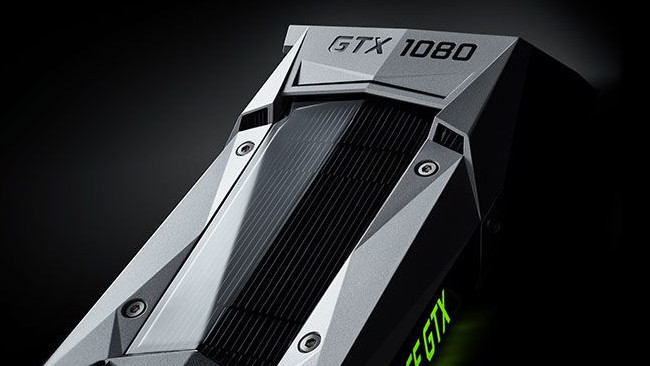
And so we reach the end of our Top 10 countdown for the year, and it wasn't a camera story that nailed the top spot, it was back to post production and all things Mac-based. Or the future lack of them, as this article about facilities increasingly adopting PC-based systems, capped off by the recent introduction of the GTX 1080, reported. It will be interesting to see how it all unfolds in 2017.
The Complete Top 10 (based on page views)
1. Nvidia's GTX 1080 Is this the end of Mac-based video production?
2. Five things a Colorist would like to say to a DP
3. Is something dramatic about to happen with Final Cut Pro X?
4. This is how good Canon’s low light camera is
5. Apple could dominate the entire NLE space with the next Final Cut Pro
6. Is Lytro's new 755MP, 300fps cinema camera the biggest leap in video tech ever?
7. Sony's new PXW-Z150: the camera you should always take with you?
8. RED launches not one, but two 8K cameras
9. Sony FS5 Review: How good is Sony's latest large sensor camera?
10. Surprise new Super 8 camera from Kodak
A few weeks ago, Nvidia announced its new range of Pascal-based GPUs: the GTX 1070 and GTX 1080, each equipped with 8GB of fast GDDR5/5X video RAM and offering superior performance to the current Maxwell-based Titan X flagship, but at around half the price. Forum speculation is already rampant about a souped up 'Ti' version of the 1080.
Whilst 'professional' users of Nvidia's powerful GPUs have traditionally specified the up-market Quadro series, a rapidly expanding 'PC Gamer' enthusiast market has driven exponential growth in Nvidia's 'consumer' GTX series, culminating in the latest super fast and super efficient Pascal generation. I think we are now at a watershed moment for those people who are keen to acquire very powerful, yet very 'low cost', HD and 4K computer based editing and post production systems.
Resurgence of PC-based editing
Over the last five years, I've seen a growth in the popularity of PC and Linux-based video systems compared with Mac-based systems. My background is broadcast television engineering during the 1980s and 1990s, so when I left full time work in the industry mid 90s, early Windows-based PC systems were well integrated.
My own Betacam SP-based video tape production facility was all PC-based. I remember commissioning a 19" rack mount 66Mhz Pentium-based SCSI 'animation' PC. It featured Autodesk's 3D Studio, with 16 Megabytes of RAM, a 1GB Hard Drive, 1.4MB floppy drive, 100MB removable Sony M/O drive and an RS422-based dual output PCI graphics engine capable of displaying and recording two simultaneous uncompressed frames of Standard Definition component (YUV) television. This custom build was pretty much state of the art at the time and it cost me around $25K all up.
During this time, we worked closely with several local advertising agencies who were all Mac based. Together, we discovered that Photoshop on Mac was able to write a Tiff file in IBM or Mac format, so in an effort to collaborate, the Agencies would walk in with a box full of 3.5" floppy drives which at 1.4MB, could just store one frame of uncompressed SD television. An animated 30 second TV spot, designed on a Mac and written to floppy in IBM format at 25fps, required a delivery of 750 floppy disks! This was impractical, but short animated inserts into regular TV Spots became good business. I should remind readers that to shoot and edit SD television, at the time, required at least one $10K camera body, one $10K dockable video tape recorder and one $10K zoom lens, just for acquisition. Post production in component (YUV) Betacam SP required a $30K recorder with a minimum of two $15K players, a $15K vision switcher, a $5K audio mixer, plus an additional $20K allocated for CRT monitoring, along with dedicated waveform monitors and vectorscopes.
My point is, it's now possible to build PC-based digital video systems which are infinitely more powerful than my 1990s tape based system at a small fraction of the cost. Although FCP/MacPro systems eventually grew to almost dominate film and television post production, I've noticed that since FCP's evolution into FCPX and the later release of the stylish, expensive and oddly impractical 'TrashCan' MacPro, many professional users have moved toward Windows or Linux-based systems, either as a 'Hackintosh' where, essentially, Mac software runs on a high-end PC hardware or as a straight out PC build. ProRes is still a very popular acquisition and post production codec, so many professional video post facilities hold on to their Mac platforms, if only so they can 'legally' encode ProRes. ProRes can be quickly and easily encoded on any PC using free or low cost FFMBC/FFMPEG based software (though there is a risk that this method of encoding could violate some QC requirements).
Has the Apple turned?
Consequently, it appears to me that Mac has steadily morphed from a Video company into a Phone company. Most popular professional NLEs now run on either Mac/PC or tri-platform, as does grading software such as DaVinci Resolve. Since the release of the GTX 10xx series of GPUs, it has never been easier or cheaper to put together a powerful and reliable video workstation, based around Win 10 64bit and using the latest Xeon or i7 CPUs and chipsets.
Reading through professional video/colorist forums, such as Lift Gamma Gain or this article by feature filmmaker Marco Solorio on OneRiver Media, it would appear that I am not the only one drawing these conclusions. I would be pleased to read whether you agree or not in our Readers' Comments section below.